Indiana Jones and the Dial of Destiny (2023)
Directed by: James Mangold
Written by: David Koepp, James Mangold, Jez Butterworth, John-Henry Butterworth
Starring: Harrison Ford, Pheobe Waller-Bridge
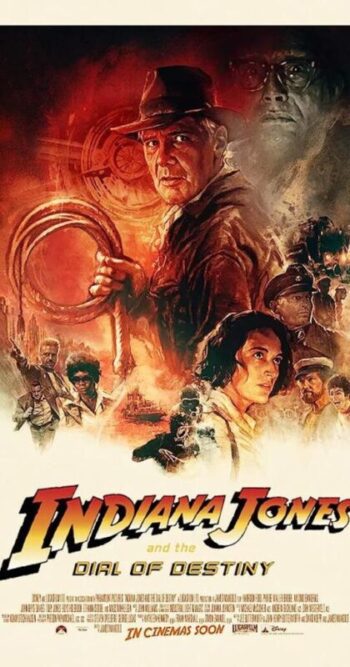
INDIANA JONES AND THE DIAL OF DESTINY
Directed by James Mangold
“It’s not the years, honey… It’s the mileage” said Indy in Raiders of the Lost Arc. It’s doubtful he’d say the same thing 40 years later (closer to 20 in his timeline) – he’s an older man with less swagger or wonder. No longer digging around for relics, he’s starting to feel like one. On paper, this should be a perfect marriage between talent and subject. After all, director James Mangold is no stranger to legacy-oriented, age-conscious sequels, having delivered what’s maybe the gold standard with Logan in 2017. Moreover, Harrison Ford is familiar enough with late returns with The Force Awakens and Blade Runner 2049 under his belt. The franchise is also all about looking backward, so there’s plenty of room for pathos. If only it were that simple.
As per past entries, we open on the closing moments of a film we never saw. This time it’s an extended prologue set in the 40s where a de-aged Indy gets captured by his old enemies, the Nazis. A daring escape and train sequence later, he finds himself with half of the latest McGuffin: Archimedes’ Antikythera, aka the Dial of Destiny, which the legends say can locate fissures in time. Cut to 20 years later, and Indy is a grouchy divorcee out of step in the 1960s – he is fed up with his students and the noisy neighours playing rock’n’roll in the early hours. Ah well, at least he’s retiring. Or so he thought – his party gets gate-crashed by his roguish and money-obsessed god-daughter Helena, who wants to the dial from the archives. On her trail is a Nazi that Jones encountered earlier, Dr. Voller, who will gladly kill for the device. Cue a globe-trotting, physics-ignoring, time-bending escapade as Indy, Helena and her Shortround stand-in Teddy compete to get the ancient artifact, all the time pursued by a would-be tyrant intent on returning to the past to finish what Hitler couldn’t.
It’s a classic Indy story that almost resembles the swashbuckling spirit of the original trilogy (the less said about the fourth, the better). And to be clear, there are moments where Dial of Destiny lives up to it. Seeing Ford plunder dig sites with the Williams’ score playing majestically in the background is enjoyable. There are also chases aplenty – so the pace hasn’t suffered. Unfortunately, while these action scenes are undeniably creative, their heavy reliance on iffy CGI means that, with few exceptions, the characters feel like weightless ragdolls. The absence of practical measures means we lose the sense of the world around them and the pattern of fast cuts to sources of peril and faster recoveries gives the action a streamlined and repetitive rythm. Only the super stylised train sequence at the beginning, grounded by its intricate attention to detail and familiar 1940s glow, will likely go down as a series classic. I’d even say it watches more like a Jurassic World film minus the dinosaurs. Good but, for most of the running time, with few signs of greatness.
To an extent, this was inevitable considering Ford’s age – he’s now over 80. It’d be unrealistic to expect him to be doing lots of stunt and unsatisfying if they all fell to his co-stars, so we’re stuck with this approach. The problem is the series’ signature, and how Indy set the archetype for a new type of action hero, has always been the scrappy winging it style. His charm comes from him never seeming in charge of situations, but reacting to them. And while we have bits of that spontineity here, and some of the humour Spielberg used so well, he and Helena are overpowered. As alluded to above, they rarely fight the odds or seem out of their depth no matter what is thrown their way. It’s a notable shift since Indy was never about having the most death-defying set pieces – it isn’t Mission Impossible – but giving viewers a fun-filled adventure. Crucially, a fun-filled adventure with heart. Yet here, the emphasis on pedestrian action means that the character drama is underdeveloped. This is a real oversight as the poignant aspects almost write themselves: an older man reconnecting with the myths of ancient societies as the same time as his personal one.
It’s great when Ford finally dons his famous jacket and hat, though what should be an inspirational journey to get there is surprisingly dreary. I’m aware this is the point, but other films have dignified the fundamentals of the character while also acknowledging their age and where they are emotionally. I get the the audience are supposed to miss Indiana Jones, but that’s of course why we’re watching it – he’s been gone 15 years. The decision to have him unconvincingly play Indy in his 60s rather than his 80s also reduces the personal stakes. Yeah, we get some scenes that evoke Jones’ various regrets, and it’s rewarding to see him gradually start to resemble his former self. But for too long, he’s a chore to be around and his passive world-weariness means he’s a supporting role in his final story – bringing us to our active heroine Helena. I initially liked their dynamic, with her taking on the role of secondary antagonist rather than a plucky sidekick. Since her breakout performance in Fleabag, Waller-Bridge has established herself as a charismatic leading lady and, along with Ford, obviously has the talent to do something special. Still, their persistent squabbles and value differences add little emotional weight since her selfish motives are seldom interrogated. And despite being depicted as a complete crank otherwise, Indy barely even seems to mind her repeated attempts to kill him. It’s a conflict with zero consequences. This inconsistency means that the way their relationship evolves feels more like a plot convenience than an organic process.
At first, it’s great that they aren’t a typical heroic duo, but then they just become one when the story demands it – it’s as if Mangold is saying playtime is over. It’s a testament to both actors that they share chemistry despite having so little to work with during their dialogue scenes (I wonder if the actors ever discussed her voicing the Millennium Falcon). Yes, both characters learn something, and there are some vague themes about greed and regret. But it feels as if there are minimal personal consequences until the surprisingly bold third act. Speaking of the third act, I think you can ignore last year’s suspicious (and frankly awful) sounding “leaks.” I don’t consider it a spoiler to say there’s no deleting Indy from history or having Helena replace him in the older films – on the contrary, there’s less cringy fan service than I expected beyond small cameos or references. Considering how elaborate the last half hour is and how clearly the script foreshadows it, it’s hard to imagine anything radically different was there. Importantly, it’s also the film’s strongest and strangest section by some distance. After an annoyingly non-descript mid-section, it propels the story to unexpected places and gives it a much-needed sense of danger. With it’s hero, it’s the point when the movie also finds its stride, and it’s not hard to imagine Lucas Film commissioned the pitch on the strength of the intro and the ending.
How much you get from Dial of Destiny likely depends on your tolerance for a mediocre Indy movie. For me, it represents a significant step up from Kingdom of the Crystal Skull and is roughly equivalent to Temple of Doom (if far less memorable). I reckon this is fine and I wasn’t expecting anything that would match up the high points of Raiders or, my personal favourite, The Last Crusade. Nor am I angry I didn’t get it. But then, in the polarised days of the internet, I can picture many rage-bait vloggers shaking with fury as they declare it the worst film since The Last Jedi (to be fair, I liked that too – more than this – though agree Rise of Skywalker was a load of bobbins). But I think it’s a tough movie to hate – or feel any other particularly strong emotion about. It isn’t bad or bold enough. If anything it’s competently made to a fault, watching like an AI take on Indy that can do most of the right things but in an often soulless way. Still, it means Indiana Jones has ended with more unremarkable than remarkable entries. Well, at least until the property gets dug up again in a decade or so for the inevitable reboot.
Rating: 





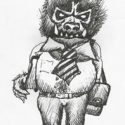
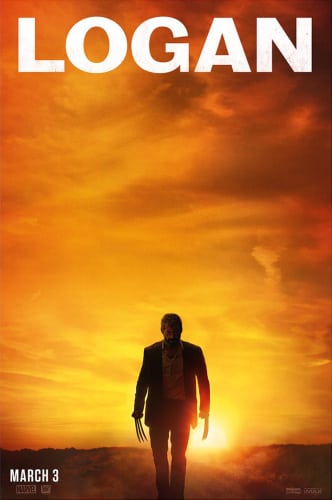
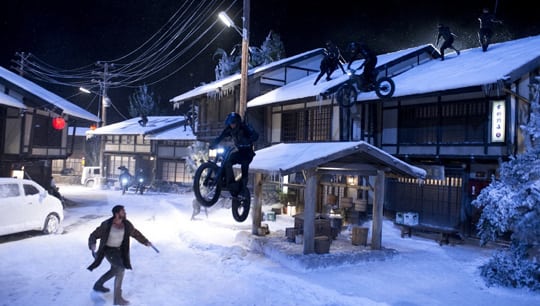
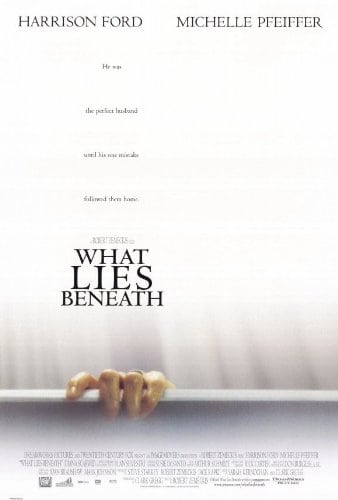
Be the first to comment